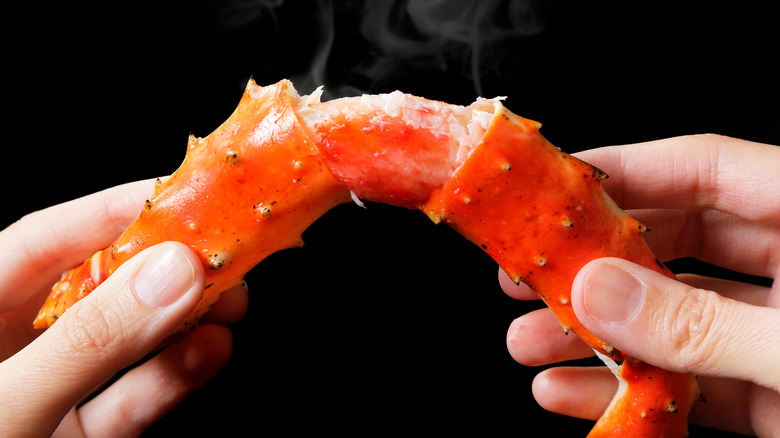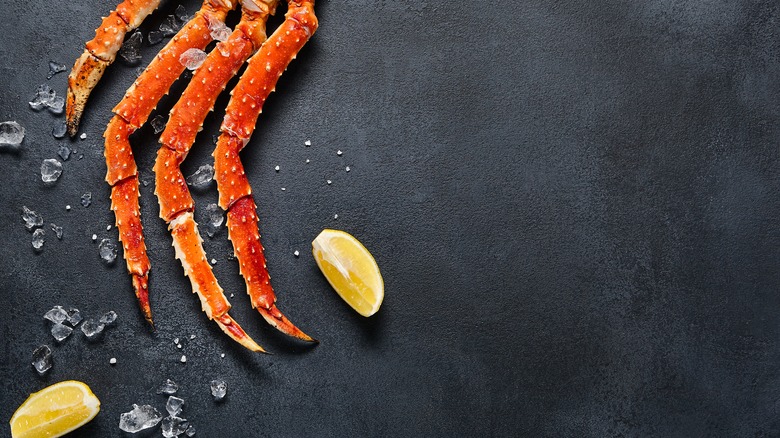Crab is a delicious and popular seafood, but it can easily be overcooked. Overcooking crab leads to some unappealing textures and flavors. Understanding what happens when crab is overcooked can help you avoid ruining this delicious crustacean.
What Defines Overcooked Crab?
Crab is properly cooked when the meat reaches an internal temperature of 165°F. Once the meat surpasses this temperature, it starts to become rubbery and dry. The flavors also become more muted and less sweet.
Signs that crab is overcooked include
- Tough, rubbery texture
- Stringy meat fibers
- Dry, chalky meat
- Loss of natural sweetness
- Bland or bitter flavors
The claws and legs are especially prone to overcooking since they have less fat and connective tissue The body meat can withstand higher temperatures better But ultimately, any part of the crab suffers when overcooked.
Why Does Overcooking Ruin Crab?
Crab meat is naturally tender and succulent when properly cooked. This is due to its composition and structure. The meat is made up of bundled protein fibers surrounded by moisture and fat.
When cooked correctly, the proteins denature, turning opaque and firm, while retaining moisture and fat within the structure. However, extended cooking causes the proteins to over-tighten, forcing out the moisture and fat.
As the meat fibers constrict, they become tough, dry and shrivelled. The flavor is also impaired as natural juices and fat leak out, taking flavor compounds with them.
How to Tell When Crab Legs Are Overcooked
Crab legs provide easy visual cues to identify overcooking. When properly cooked, the shell will turn bright red and the meat will become opaque and firm but still moist.
Signs of overcooked crab legs include
- Shells very dark red or blackened in areas
- Meat separating from the shell
- White meat fibers visible
- Little to no juice inside legs
- Meat does not easily extract from shell
The meat itself will be dry looking and stringy. When extracted, it will not hold together and shreds into stringy bits rather than large chunks.
Effects of Overcooking Different Types of Crab
The effects of overcooking can vary slightly depending on the type of crab:
King Crab
- Becomes tough and chewy
- Loses sweetness
- Can take on bitter, sulfurous flavors
Snow Crab
- Flesh dries out and shreds
- More prone to stringy texture
- Delicate flavor fades entirely
Dungeness Crab
- Delicate texture turns rubbery
- Loses signature sweetness
- Can develop fishy, ammonia flavors
Blue Crab
- Dry, crumbly texture
- Sweetness declines sharply
- Some bitter notes emerge
No matter the type, overcooked crab lacks the enjoyable texture and flavor that makes these crustaceans so prized.
Tips to Avoid Overcooking Crab
Avoiding overcooked crab takes care and restraint during cooking:
- Cook just until opaque and shells are red, not blackened
- For boiled crab, keep temperature right at a simmer
- For steamed crab, use brief cook times
- Check claws and legs first as they overcook faster
- Allow 5-10 minutes carryover cooking after removing from heat
- For reheating, use very low heat and watch carefully
Paying attention to recommended cook times and techniques for different preparations can prevent overcooking. Using a thermometer is also helpful for perfect doneness.
Can You Fix Overcooked Crab?
Unfortunately, there is no way to reverse the effects of overcooking once it has occurred. The proteins cannot be revived after tightening excessively. And moisture as well as fat and juices are irrecoverable.
However, it is possible to improve the flavor of overcooked crab through sauce, seasonings and preparation:
- Serve in a dip, salad, or stew to add moisture
- Season aggressively with bold spices, herbs and citrus
- Pair with butter or oil to impart richness
- Use crab in fried rice, cakes or stuffing where texture matters less
While the meat itself can’t be restored, surrounding flavors and textures can compensate for the flaws of overcooking. With creativity, overcooked crab won’t have to go to waste.
How to Store and Reheat Leftover Crab
To enjoy crab properly, it’s important to store and reheat it correctly:
- Refrigerate leftover crab in an airtight container up to 2 days
- For reheating, steam gently, add to hot dishes or microwave at 50% power
- Avoid direct dry heat which can worsen moisture loss and texture
- Add liquids or sauce when reheating for added moisture and flavor
Proper storage and reheating keeps leftover crab meat tender and succulent. Used wisely, leftovers can be just as enjoyable as fresh cooked crab.
Overcooking crab is an easy mistake but disastrous for the eating experience. Knowing how to identify overcooked crab and why it happens can help avoid ruined dinners. With care taken during cooking and creative use of leftovers, crab can remain the tender and sweet treat it’s meant to be. A delicate touch preserves the joy of eating this delicious crustacean.

Mistake: Only thinking inside the box when reheating crab legs

Sometimes, thinking outside the box is the best route when cooking something. This is no less true when it comes to crab legs. Many methods have utility when cooking and reheating crab legs, and each confers a distinct flavor, texture, and quality. The air fryer can save you time and produce supremely tender crab legs by circulating air around them. If you have the time, you will want to go low and slow and use your smoker to infuse the crab legs with extra flavor from the hardwood of your choice.
Though the microwave is not my preferred method for cooking crab legs, it can be quick if youre pressed for time. The key is to be careful not to overcook them. I always recommend shortening the cooking time by half when you begin. You can cook crab legs longer, but you cannot uncook them. Lastly, if you have an immersion circulator, sous vide crab legs can turn out uniformly moist and delicious without becoming waterlogged or losing flavor.
Mistake: Buying poor-quality crab legs

The best advice I can give for buying quality crab legs is to purchase them from a reputable seafood purveyor. If you do not have a dedicated seafood market nearby or a grocery store that you know has a high turnover rate for inventory and is sourcing its product regularly, this is not an ingredient to pick up just because you happen to see it on sale. If you are unsure, it may behoove you to purchase crab legs from an online purveyor accustomed to shipping seafood safely and efficiently.
You can purchase crab legs fresh or frozen. To determine the quality of fresh crab legs, look for ones that are vibrant-hued, glossy, have a dense texture, feel heavier than they appear, and have a sweet, oceany aroma, not a chemically ammoniated one. Frozen legs should not have any evidence of freezer burn or damage to the packaging. While size may be a consideration, as smaller legs may be more luscious than bigger ones, this is contingent on the species. Lastly, if you can obtain crab in season, this is advisable.
How do you know when crab legs are done boiling?
FAQ
Can you overcook crab?
Yes, it is possible to overcook crab, whether it’s already cooked and being reheated or if it’s raw. Overcooked crab meat will become tough, rubbery, and less flavorful.
What happens if you boil crab too long?
As I mentioned above, if you overcook them the meat will not pull from inside the shell in one large piece, but will fall apart into little soft shreds that are very difficult to eat.
What happens if you overcook seafood?
Cooking fish for too long can lead to several undesirable outcomes: Texture Changes: Overcooked fish becomes dry and tough. The proteins in the fish continue to denature and expel moisture, resulting in a rubbery texture. Flavor Loss: Extended cooking can diminish the delicate flavors of the fish.
How to know if cooked crab has gone bad?
To determine if the crab has gone bad, use your eyes and nose. There should be no obvious discoloration to the meat, nor should it appear to be slimy or spongy. Lastly, the aroma should be sweet and pleasant. Anything resembling an ammoniated smell indicates the crab has passed its prime and should be discarded.
